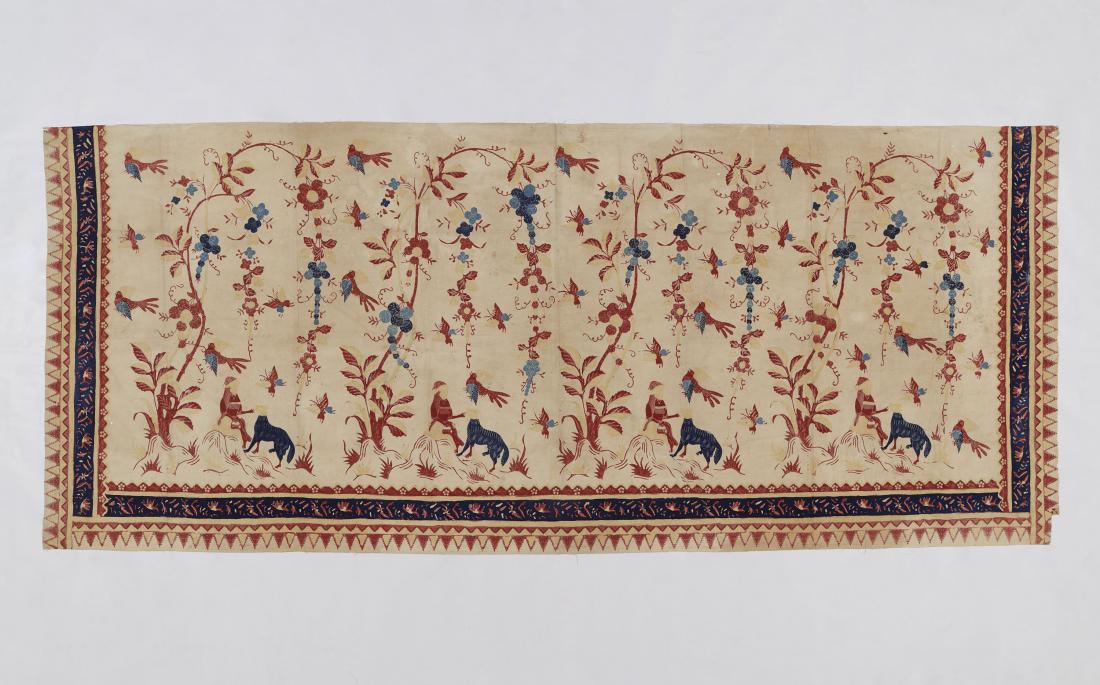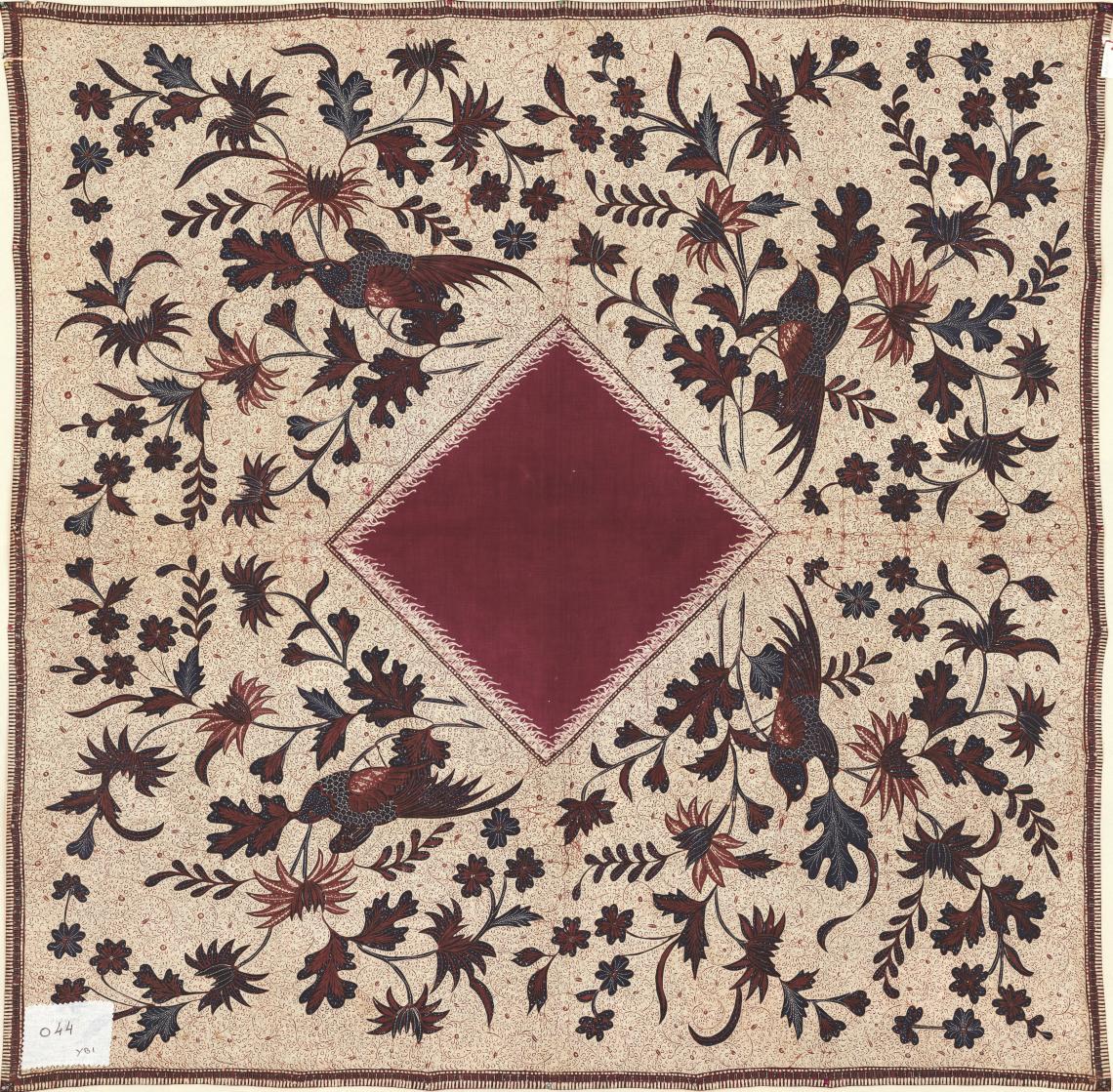Peranakan Batik, Java, Indonesia, c. 20th century, Cotton.
A technique of creating patterns on cloth through wax-resist printing and dyeing, the word batik derives from titik, the Malay word for dot or point and the Javanese word amba, which means “to write.” Though Indonesian in its origin, the term has come to be associated with wax-based resist dyeing techniques practiced around the world.
Batik has historically been practised in several parts of the world, including India, China, Southeast Asia and Africa. The origins of the technique and its influences remain unclear. In the Indian context, historians believe some of the Fustat textiles – found in excavations in Fustat near Cairo, Egypt in the nineteenth century – indicate the antiquity of wax-resist dyeing in India. Some of the fragments show the use of wax-resist dyeing techniques and are likely to have been made in Gujarat in the fifteenth and sixteenth centuries. The wax-resist technique was also a step in the production of chintz cloth made on the Coromandel coast for European and Southeast Asian markets in the seventeenth and eighteenth centuries. A more direct historical connection with Indonesian batik can be found in Bengal, where techniques from Indonesia were taught at Kala Bhavana, the fine arts institute at Shantiniketan. This exchange came about after Rabindranath Tagore’s visit to Java and Bali in 1927, where he purchased batik fabrics and tools, and Kala Bhavana later offered local artisans training in batik work on leather and cloth.
In the batik technique, wax is applied onto the textile with a brush, a pen or a block. In Indonesia, the canting – a pen-like instrument made of copper – is used to apply freehand and intricately detailed designs in wax on the cloth. In India, the batik pen is similar to the kalam used in the kalamkari technique. Brushes are also used to create freehand patterns or apply resists to larger areas on the cloth. In mass-produced batik fabrics, the resist is applied using stamps or blocks and, in contemporary practice, screen printing is also used to apply the resist.
Ikat Kepala, Banyumas, Central Java; c. 1930.
Beeswax was traditionally used as a resist, but there were local variations as well – in the Kutch region of Gujarat, for example, the resist was a paste made of hot oil extracted from the seeds of the local pilu tree. Over time, however, paraffin wax has become the most popular resist, giving finished batik textiles their distinctively veined appearance as the dyes often seep into the cracks in the wax. Once the resist is applied, the cloth is dyed in cold water – going from lighter to darker shades – with the process being repeated and more areas being reserved and dyed as needed. After the required design and colours are achieved, the cloth is boiled in hot water to allow the wax to melt away.
In India, the states of Bengal, Gujarat and Madhya Pradesh are known for batik-printed textiles, although the technique is also practised on a smaller scale in other parts of the country, where it is also used to create textile art.
This article first appeared in the MAP Academy Encyclopedia of Art.
The MAP Academy is a non-profit online platform consisting of an Encyclopedia of Art, Courses and a Blog, that encourages knowledge building and engagement with the visual arts and histories of South Asia. Our team of researchers, editors, writers and creatives are united by a shared goal of creating more equitable resources for the study of art histories from the region.




